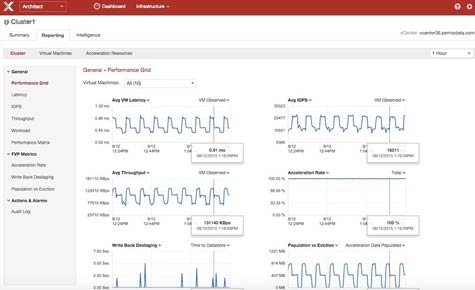Storage in the enterprise is often challenged by the contention issues between applications sharing the same physical infrastructure that have to be navigated. While virtualization has certainly improved overall IT infrastructure utilization, it generally requires a storage specialist to make sure that applications are getting access to the amount of I/O throughput that they really need.
To make it simpler for IT administrators to figure out how to optimize I/O performance, PernixData today unveiled its Architect platform, a real-time analytics application specifically designed for virtual server and storage environments.
Jeff Aaron, vice president of marketing for PernixData, says once Architect is installed inside a hypervisor, IT administrators can use it to determine the size of any given working set. Admins can then determine the correct level of reads and writes needed to support that application.
Along with the launch of Architect, PernixData also announced the general availability of version 3.0 of FVP, the server-side storage software that embeds itself into the hypervisor to optimize both CPU memory and solid-state storage I/O performance. In addition, the company announced it is now offering a free version of its software, called FVP Freedom, which IT organizations can use to support read-only I/O requests in memory. Aaron says software for optimizing read-only access is now essentially free.
At present, Aaron says PernixData has more than 500 customers. Clearly, the FVP Freedom is designed to increase the base of organizations using the company’s software.
Of course, that’s not likely to happen until IT organizations first make use of Architect to figure out which applications will actually benefit most from optimizing I/O performance by allocating multiple tiers of memory as efficiently as possible. In the absence of a dedicated storage architect to help admins figure all that out, the next best thing is an analytics application that does it for them.




